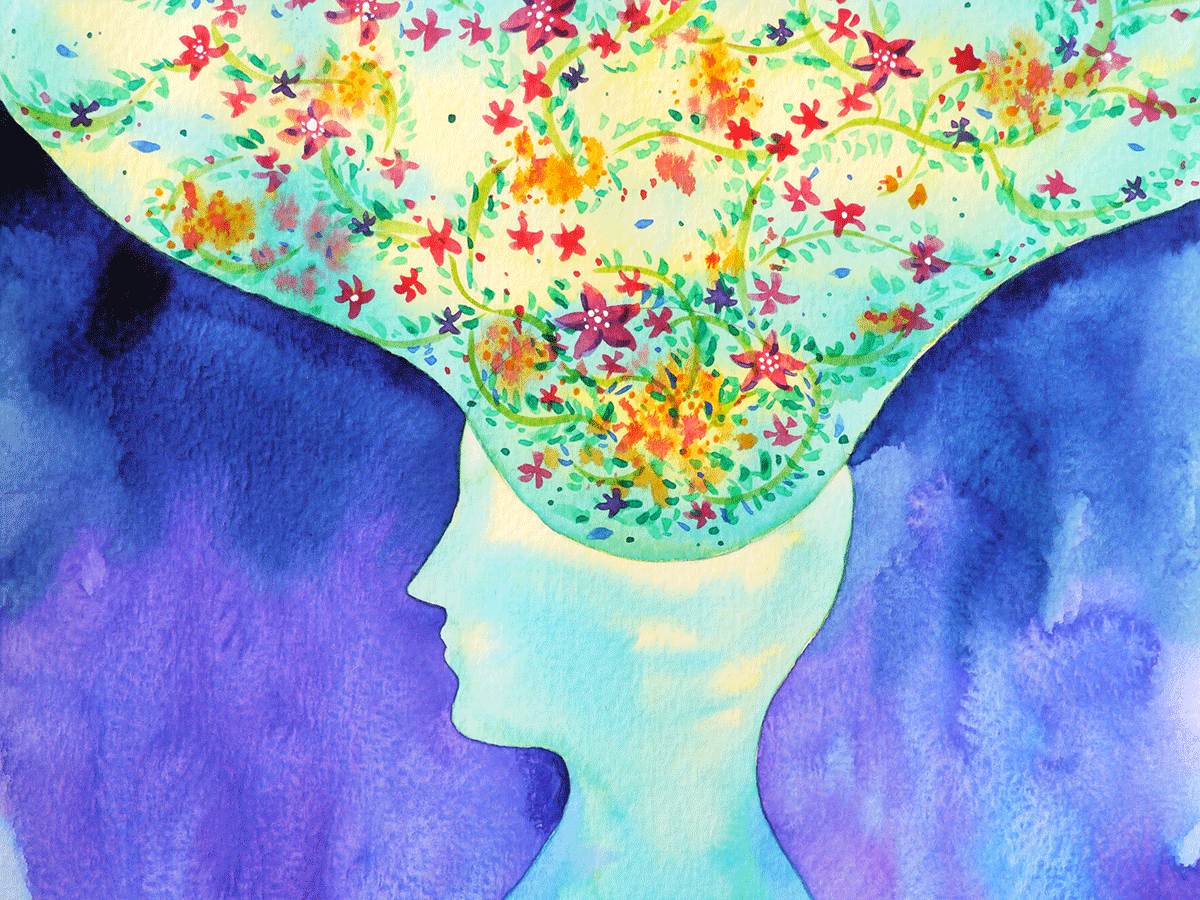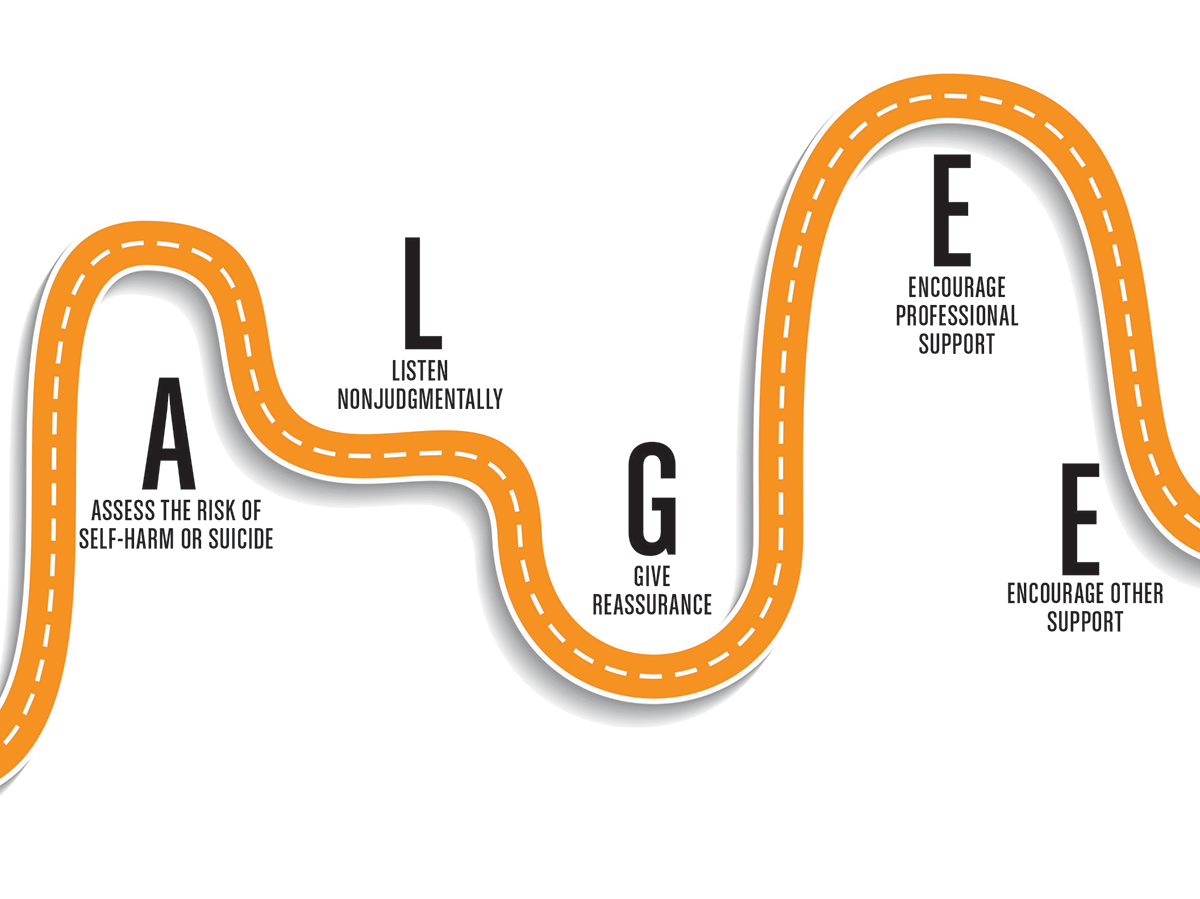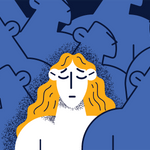Lessons From a Crash Course in Mental Wellness
We think of first aid for boo-boos and broken bones, but never brains. That’s all changing, and writer Bonnie Schiedel took the course to prove it. Here’s her account of a crash course in mental wellness.

Like many things these days, it began my social media feed: a colleague posting a heartfelt account of her postpartum depression, a neighbour mentioning an ill-timed anxiety attack, a friend talking about her daughter’s schizophrenia symptoms. It’s pretty incredible—and encouraging—to see how we’re all getting a little more comfortable talking about our own mental health.
After all, one in five Canadians will experience a mental health problem in any given year, according to the Canadian Mental Health Association (CMHA). (And here are more mental health facts you should know.) Still, for a lot of us, it’s easier to offer support when it’s one step removed online rather than face to face. I really had no idea what I would say or do if someone I was with had, say, an anxiety attack or was really struggling with post-holiday depression. I wondered if I’d freeze up or say the wrong thing.
I didn’t like feeling clueless, so when I saw a Facebook post about a mental health first-aid course being offered in my city, I thought, Hell, yes! I signed up and, a few weeks later, headed to a hotel conference room with 22 other people to learn how to become a mental health first aider during a two-day, 12-hour course.
What’s a Mental Health First-Aid Course?
Mental health first-aid programs have been around since 2000, when an Australian couple—Betty Kitchener, a nurse who has coped with depression throughout her life, and Anthony Jorm, a psychology professor and researcher—were out walking their dog together and had a light bulb moment to create a course. A lot of other people thought it was a good idea, too: About two million people worldwide have now taken the course they developed. (Lady Gaga even offered free or subsidized training in cities on her last tour.)
Jordan Friesen, director of workplace mental health at the CMHA, has been watching the growing popularity of first-aid courses with interest. “Mental health first aid fits into the conversation about mental health because we’re realizing that in environments like schools, workplaces and churches, it’s really effective and necessary to have ‘gatekeepers,’ or people who can respond and direct people to appropriate resources,” he says. “[The courses] can play a vital role in keeping people safe and healthy.”
The most common program—and the one I took—is the basic course offered by the Mental Health Commission of Canada (MHCC). Instructors take a five-day course to get certified, so it could be offered at your local public health unit or St. John Ambulance. The MHCC also has courses for people who interact with specific groups, including First Nations, seniors, youth and veterans.
A Lesson in Helping Those in Need
Much like physical first-aid training, mental health first aid doesn’t mean diagnosing or counselling but rather learning to provide immediate practical help in the moment before getting help from professionals. (In other words, you’re the bandage, not the stitches.) Mental health first-aid training gives regular people the tools to recognize a potential issue, respond with compassion and offer guidance to get more support.
A big part of the course is using the acronym ALGEE as a road map to navigate situations. It stands for:

During the course, we learned about some signs and symptoms of the most common mental illnesses—from substance abuse disorders and phobias to post-traumatic stress disorder and schizophrenia—and then split up into groups. Our instructor handed each group an index card that described a scenario and we would figure out how we could handle it in real life using ALGEE as a guideline (for example, a friend confides that she has been drinking and taking painkillers to deal with the stress of her crumbling marriage and the end of her contract position at work).
Then, we would tell the whole group about our approach, and the instructor would give feedback of where we were on the right track and where we had missed out (for example, it’s not very helpful to casually tell your distressed friend to just go to the gym to clear her head). And, though it’s natural to worry about saying the wrong thing, keep in mind that your role is to be an empathetic listener.
“Often, when people experience a mental health problem, they don’t want your advice,” says Holly Kondreska, a mental health first-aid instructor in Thunder Bay, ON. “They just need to be heard. We often feel the need to talk to fill the void, which can ruin rapport. Long silences are OK.”
A Lesson in Understanding Mental Health
Along with practising the scenarios, there were some eye-opening interactive activities, too, like trying to carry on a conversation with one person while another person was muttering in your ear (to get a little empathy for what auditory hallucinations could be like), practising “finger breathing” to help quell anxiety (holding up one hand in front of you and tracing up the side of one thumb while you inhale, then down the side of that thumb while you exhale, repeating for the other fingers) and pouring a glass of wine to show how easy it is to get carried away in our daily drinking (a serving of wine is five ounces, but our class volunteer poured a nine-ounce glass without batting an eye). Our instructor also walked us through a list of local resources we could refer people to for help, which was useful because mental health care can often be fragmented and difficult to navigate. (One of these mental health apps can help those in need, too.)
A Lesson in the Way We Talk
Language is important, too. We talked about saying “a person living with psychosis” rather than the more dehumanizing “psychotic.” Starting a conversation with “I’ve noticed that…” is a good way to ease into an uncomfortable talk.
One big aha moment for our class was that, even though it’s a squirmy question, it’s totally OK to gently ask someone “Are you thinking about hurting yourself?” or “Have you thought about suicide?” because talking about self-harm or suicide won’t plant the idea in a person’s mind. (Also, check out these harmful mental health myths.)
Does Mental Health First Aid Work?
That depends. There’s little research on whether it benefits recipients because it’s not ethical for researchers to ask them if their encounter with a mental health first aider was helpful or not, which makes it tricky to study.
One long-term study, currently being conducted in Australia, randomly assigned parents of teens to either a physical first-aid course or a mental health first-aid course, says Jorm, who is leading the study. It was designed to assess the effects on a small percentage of teens who require either form of first aid from their parents.
But there are lots of studies that show that people who take mental health first-aid courses like the pay-off: They feel more knowledgeable about mental illness, are more confident in their ability to help others, and are more likely to provide help that aligns with what experts say should be done.
That’s a win in my book, and it pretty much sounds like my experience. In the few months since I completed the course, I haven’t used my mental health first aid directly, but I definitely like having the skills in my toolbox for the day when I do need them.
Next, see how Canadians feel about their mental health, ranked by province.




